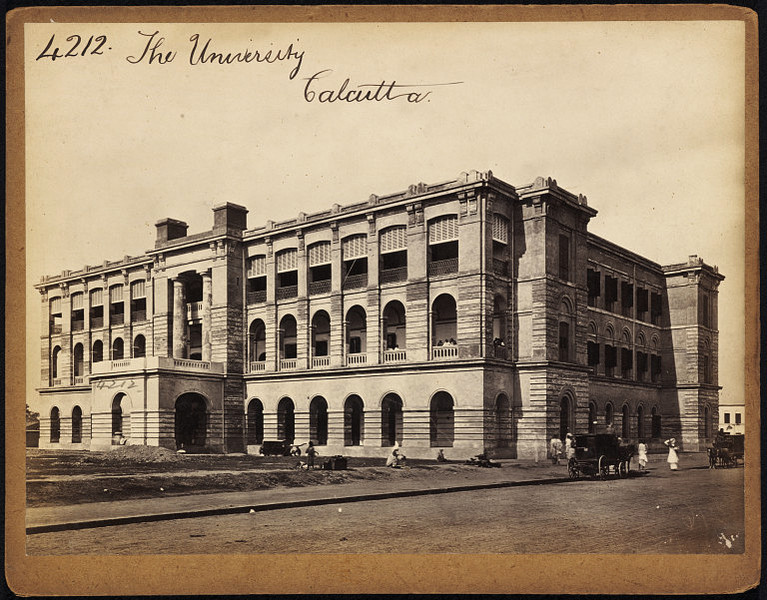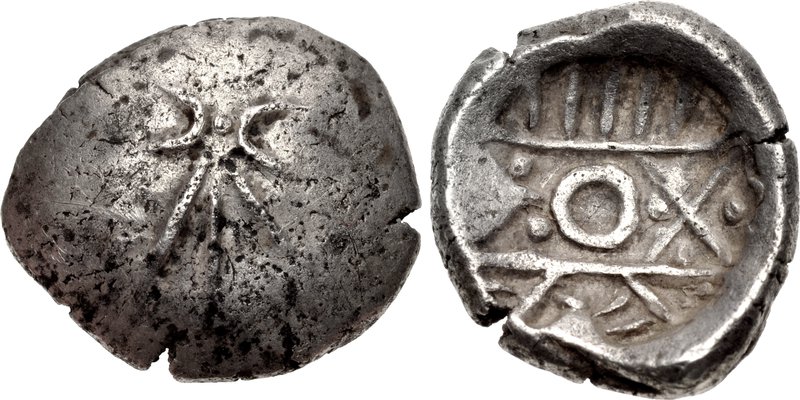|
R. D. Banerji
Rakhal Das Banerji, also Rakhaldas Bandyopadhyay (12 April 1885 – 23 May 1930), was an Indian archaeologist and an officer of the Archeological Survey of India (ASI). In 1919, he became the second ASI officer deputed to survey the site of Mohenjo-daro by Sir John Marshall, director-general of the ASI, and returned there in the 1922-23 season. He was the first person to propose the remote antiquity of the site—which he did in a letter to Marshall in 1923—and in effect of the Harappan culture. After leaving the ASI, he held the Manindra Chandra Nandy professorship of Ancient Indian History and Culture at the Banaras Hindu University from 1928 until his premature death in 1930. In 1931, in the introduction of ''Mohenjo-daro and the Indus Civilization'', London: Arthur Probsthain, 1931, Sir John Marshall wrote, "Three other scholars whose names I cannot pass over in silence, are the late Mr. R. D. Banerji, to whom belongs the credit of having discovered, if not M ... [...More Info...] [...Related Items...] OR: [Wikipedia] [Google] [Baidu] |
University Of Calcutta
The University of Calcutta (informally known as Calcutta University; CU) is a Public university, public collegiate university, collegiate State university (India), state university in India, located in Kolkata, West Bengal, India. Considered one of best university, state research university all over India every year, CU has topped among India's best universities several times. It has 151 affiliated undergraduate colleges and 16 institutes in Kolkata and nearby areas. It was established on 24 January 1857 and is the oldest multidisciplinary and European-style institution in Asia. Today, the university's jurisdiction is limited to a few districts of West Bengal, but at the time of establishment it had a catchment area, ranging from Lahore to Myanmar. Within India, it is recognized as a "Five-Star University" and accredited an "A+" grade by the National Assessment and Accreditation Council (NAAC). The University of Calcutta was awarded the status of "Centre with Potential for Exce ... [...More Info...] [...Related Items...] OR: [Wikipedia] [Google] [Baidu] |
Manindra Chandra Nandy
Maharaja Sir Manindra Chandra Nandy (29 May 1860 – 12 November 1929) was the Maharaja of Cossimbazar Raj from 1898 to 1929, a philanthropist and reformist during the period of Bengal Renaissance. Family Manindra Chandra Nandy was born on 29 May 1860 at Shyambazar in North Kolkata in present-day West Bengal, India. His ancestral house was at Shyambazar, North Kolkata. From his mother's side he belonged to the royal family of Cossimbazar. His mother, Gobinda Sundari (sister of Raja Krishnath Roy) died when he was two, and his father died when he was ten.Official website of Murshidabad Fire Dekha ''Biography of Maharaja Manindra Chandra Nandy'' He became the of Cossi ... [...More Info...] [...Related Items...] OR: [Wikipedia] [Google] [Baidu] |
Indian Coinage
The Coinage of India began anywhere between early 1st millennium BCE to the 6th century BCE, and consisted mainly of copper and silver coins in its initial stage.Allan & Stern (2008) The coins of this period were ''Karshapanas'' or ''Pana''. A variety of earliest Indian coins, however, unlike those circulated in West Asia, were stamped bars of metal, suggesting that the innovation of stamped currency was added to a pre-existing form of token currency which had already been present in the Janapadas and Mahajanapada kingdoms of the Early historic India. The kingdoms that minted their own coins included Gandhara, Kuntala, Kuru, Magadha, Panchala, Shakya, Surasena, Surashtra and Vidarbha etc. The tradition of Indian coinage in the 2nd millennium evolved with Indo Islamic rule in India.Allan & Stern (2008) and the British Raj in the 19th century.Sutherland (2008) Origin of currency in Indian subcontinent Prehistoric and Bronze Age origins Cowry shells were first used in ... [...More Info...] [...Related Items...] OR: [Wikipedia] [Google] [Baidu] |
Bengali Language
Bengali ( ), generally known by its endonym Bangla (, ), is an Indo-Aryan languages, Indo-Aryan language native to the Bengal region of South Asia. It is the official, national, and most widely spoken language of Bangladesh and the second most widely spoken of the 22 scheduled languages of India. With approximately 300 million native speakers and another 37 million as second language speakers, Bengali is the List of languages by number of native speakers, fifth most-spoken native language and the List of languages by total number of speakers, seventh most spoken language by total number of speakers in the world. Bengali is the fifth most spoken Indo-European language. Bengali is the official language, official and national language of Bangladesh, with 98% of Bangladeshis using Bengali as their first language. Within India, Bengali is the official language of the states of West Bengal, Tripura and the Barak Valley region of the state of Assam. It is also a second official lan ... [...More Info...] [...Related Items...] OR: [Wikipedia] [Google] [Baidu] |
Somapura Mahavihara
Somapura Mahavihara ( bn, সোমপুর মহাবিহার, Shompur Môhabihar) in Paharpur, Badalgachhi Upazila, Badalgachhi, Naogaon District, Naogaon, Bangladesh is among the best known Buddhist viharas or monasteries in the Indian Subcontinent and is one of the most important archaeological sites in the country. It was designated as a UNESCO World Heritage Site in 1985. It is one of the most famous examples of architecture in pre-Islamic Bangladesh. It dates from a period to the nearby Halud Vihara and to the Sitakot Vihara in Nawabganj Upazila, Dinajpur, Nawabganj Upazila of Dinajpur District. History A number of monasteries grew up during the Pāla period in ancient India in the eastern regions of the Indian subcontinent, comprising Bengal and Magadha. According to Tibetan sources, five great Mahaviharas (universities) stood out: Vikramashila, the premier university of the era; Nalanda, past its prime but still illustrious; Somapura Mahavihara; Odantapuri, O ... [...More Info...] [...Related Items...] OR: [Wikipedia] [Google] [Baidu] |
Archaeological Survey Of India
The Archaeological Survey of India (ASI) is an Indian government agency that is responsible for archaeological research and the conservation and preservation of cultural historical monuments in the country. It was founded in 1861 by Alexander Cunningham who also became its first Director-General. History ASI was founded in 1861 by Alexander Cunningham who also became its first Director-General. The first systematic research into the subcontinent's history was conducted by the Asiatic Society, which was founded by the British Indologist William Jones on 15 January 1784. Based in Calcutta, the society promoted the study of ancient Sanskrit and Persian texts and published an annual journal titled ''Asiatic Researches''. Notable among its early members was Charles Wilkins who published the first English translation of the '' Bhagavad Gita'' in 1785 with the patronage of the then Governor-General of Bengal, Warren Hastings. However, the most important of the society's achieveme ... [...More Info...] [...Related Items...] OR: [Wikipedia] [Google] [Baidu] |
Indian Museum
The Indian Museum in Central Kolkata, West Bengal, India, also referred to as the Imperial Museum at Calcutta in colonial-era texts, is the ninth oldest museum in the world, the oldest and largest museum in India as well as in Asia. It has rare collections of antiques, armour and ornaments, fossils, skeletons, mummies and Mughal paintings. It was founded by the Asiatic Society of Bengal in Kolkata (Calcutta), India, in 1814. The founder curator was Nathaniel Wallich, a Danish botanist. It has six sections comprising thirty five galleries of cultural and scientific artifacts namely Indian art, archaeology, anthropology, geology, zoology and economic botany. Many rare and unique specimens, both Indian and trans-Indian, relating to humanities and natural sciences, are preserved and displayed in the galleries of these sections. In particular the art and archaeology sections hold collections of international importance. It is an autonomous organization under Ministry of Culture, ... [...More Info...] [...Related Items...] OR: [Wikipedia] [Google] [Baidu] |
Presidency College, Kolkata
Presidency University, Kolkata (formerly known as Presidency College, Kolkata) is a second major public state aided research university located in College Street, Kolkata. Considered as one of best colleges when Presidency College was affiliated to University of Calcutta. Established in 1817, it is the oldest college in India (in Asia as well). It was formerly known as Hindu College and then Presidency College and now Presidency University. The institution was elevated to university status in 2010 after functioning as a top constituent college of the University of Calcutta for about 193 years. The university had its bicentenary celebrations in 2017. In its first cycle as a university, Presidency received A grade with a score of 3.04/4.00 by the NAAC. Presidency has been recognized as an "Institute of National Eminence" by the UGC. It appeared in the inaugural list of top 50 institutions of NIRF rankings in 2016. However, NIRF rankings in 2017 and 2018 excluded universiti ... [...More Info...] [...Related Items...] OR: [Wikipedia] [Google] [Baidu] |
Bangaon
Bangaon is a city and a municipality in North 24 Parganas district in the state of West Bengal, India. It is the headquarters of the Bangaon subdivision. Geography Location Bangaon is located at . It has an average elevation of 7 metres (22 feet). Arsenic contamination is a major concern in this area. Area overview The area shown in the map was a part of Jessore district from 1883. At the time of Partition of Bengal (1947) the Radcliffe Line placed the police station areas of Bangaon and Gaighata of Jessore district in India and the area was made a part of 24 Parganas district. The renowned novelist, Bibhutibhushan Bandopadhyay (of ''Pather Panchali'' fame) belonged to this area and many of his writings portray his experience in the area. It is a flat plain located in the lower Ganges Delta. In the densely populated area, 16.33% of the population lives in the urban areas and 83.67% lives in the rural areas. Note: The map alongside presents some of the notab ... [...More Info...] [...Related Items...] OR: [Wikipedia] [Google] [Baidu] |
Krishnath College School
Krishnath College School, is one of the oldest schools in Bengal situated in Baharampur, Murshidabad district in India. Originally located in the same building as Krishnath College, it was moved into separate buildings in 1908. History The original School had no separate entrance and was part of Krishna College. Regular classes were started on the 21st of November, 1853. In 1855, the School was shifted to Mr. Verdon Monasagon's two-story house. In the year 1857, the School was again shifted to Banjetia House of Maharani Swarnamoyee. When the Krishnath College Building was completed, the School was shifted to the eastern block of said building. In 1887, Maharani Swarnamoyee undertook the administrative and financial control of the College as well as the School. In 1902, the name of the School was changed to Krishnath College School. On 9 August 1909, the foundation stone was laid by Hon’ble Sir Edward Norman Baker, the Lieutenant-Governor of Bengal. The school was shifted to ... [...More Info...] [...Related Items...] OR: [Wikipedia] [Google] [Baidu] |
Indian States
India is a federal union comprising 28 states and 8 union territories, with a total of 36 entities. The states and union territories are further subdivided into districts and smaller administrative divisions. History Pre-independence The Indian subcontinent has been ruled by many different ethnic groups throughout its history, each instituting their own policies of administrative division in the region. The British Raj mostly retained the administrative structure of the preceding Mughal Empire. India was divided into provinces (also called Presidencies), directly governed by the British, and princely states, which were nominally controlled by a local prince or raja loyal to the British Empire, which held ''de facto'' sovereignty (suzerainty) over the princely states. 1947–1950 Between 1947 and 1950 the territories of the princely states were politically integrated into the Indian union. Most were merged into existing provinces; others were organised into ... [...More Info...] [...Related Items...] OR: [Wikipedia] [Google] [Baidu] |





.jpg)